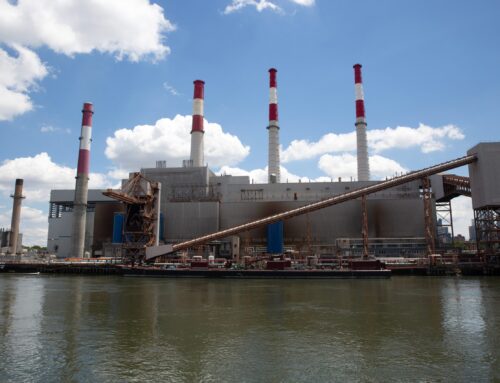Uzbekistan powers ahead with renewable energy transformation
November 25, 2025
Uzbekistan is rapidly expanding its use of renewable sources — particularly hydropower and wind — as part of a broader drive to diversify its energy supply and strengthen energy security across Central Asia. According to the International Energy Agency, the country — long reliant on fossil fuels for nearly 80% of its electricity — is undergoing a fundamental transformation of its energy landscape.
The change is already visible in the numbers. In July 2025 alone, Uzbekistan’s solar, wind and hydroelectric plants generated 2.89 billion kWh of electricity, representing 27% of total national output for that month. That is equivalent to the annual consumption of around 870,000 households.
“Today, we can confidently say that more than 20 large-scale projects in solar, wind and battery storage systems are being implemented across the country,” said Minister of Energy Jurabek Mirzamakhmudov. “Nearly five gigawatts of capacity have already been commissioned and are now in operation.”
These gains mark a major milestone in Uzbekistan’s green transition, supported by strategic investment and domestic innovation.
From infrastructure to innovation
Hydropower remains central to Uzbekistan’s renewable development. The country currently operates 77 hydropower plants with a combined capacity of 2.3 GW.
“Hydropower, as a key component of green energy, remains a top priority,” Mirzamakhmudov noted. “In addition to plans to double capacity by 2030, presidential decrees have been adopted to promote small and mini hydropower plants. More than 2,000 such projects are planned nationwide, creating opportunities for small businesses and private households to participate.”
Among the most ambitious new undertakings is the Naryn Hydropower Cascade, a multi-phase complex that will eventually comprise six stations. The first, Naryn HPP-1, was commissioned in September 2025, just over a year after construction began.
“During the President’s visit to Namangan in March 2024, construction officially began. By 11 September 2025, the plant was fully operational,” said Abdurashid Kamolov, head of the Naryn Hydropower Cascade. “Over 300,000 cubic metres of concrete and more than 1.5 million cubic metres of earthwork were completed. Our new 220-kV substation — now the fifth largest in the Namangan region — transmits electricity from the cascade to the national grid.”
Naryn HPP-1 can generate 171 million kWh of electricity per year and supports 130 new jobs. It can power 430,000 households while saving around 290 million cubic metres of natural gas annually — worth nearly €21 million.
Equally significant are its engineering achievements. For the first time in Uzbekistan’s hydropower history, horizontal capsule-type hydro units were installed. Built on the relatively flat terrain of the Naryn River, the project required innovative low-pressure design solutions, including an artificial hydraulic pressure system to generate power efficiently even without natural elevation.
“In just 400 to 450 days, we completed what previously took five or six years — including design, equipment production and construction,” said Vohidjon Ahmadjonov, head of Hydro Construction Customer Service LLC. “This marks a new stage for Uzbekistan: we can now design, build and equip a hydropower plant entirely on our own.”
Achieving hydropower independence
Naryn HPP-1 is the first hydropower plant in Uzbekistan fully designed and built with domestic expertise and equipment. All major components were produced at the Uzhydropower Joint Venture in the Bostanlik district of Tashkent region — the only facility in Central Asia capable of manufacturing hydrogenerators of up to 40 MW. Equipment from this plant is already operating at a number of small hydropower stations across Karakalpakstan and Surkhandarya.
“Every major construction project has three main parts: design, construction and equipment production,” explained Ahmadjonov. “In the past, we had potential but not full independence. Now we can carry out every stage ourselves. With the Naryn Cascade, Uzbekistan has joined the ranks of countries able to complete the entire hydropower process domestically.”
Harnessing the wind
While hydropower showcases technical maturity, wind energy represents Uzbekistan’s next frontier. Preliminary studies estimate a theoretical potential of more than 520,000 MW — among the highest in the region. To realise this, Uzbekistan has signed Power Purchase Agreements (PPAs) and Memorandums of Understanding (MoUs) with investors from Saudi Arabia, China and Europe, supported by favourable regulations, guaranteed tariffs and a stable investment climate.
One notable project is the Charvak Wind Power Plant, now under construction in the Bostanlik district. Developed with a €25.8 million grant from China’s Xinjiang Department of Commerce, the 20-MW plant is due for completion by the end of 2025.
According to Ulugbek Hikmatov, chief specialist at Uzbekhydroenergo JSC, the plant will generate 50 million kWh of electricity annually, providing clean power to 20,000 households, saving 14 million cubic metres of natural gas, and creating new employment in the region.
Progress and vision
These renewable initiatives underpin Uzbekistan’s broader “Uzbekistan–2030” strategy, which aims to raise the share of renewables in electricity generation to 54% by 2030.
“All current projects in solar, wind and battery storage are being implemented through direct investments and public–private partnerships,” Mirzamakhmudov said. “This reflects the effectiveness of our legal framework and, most importantly, investor confidence in Uzbekistan’s ongoing reforms. Under these agreements, electricity purchase is guaranteed for 20 to 25 years.”
“Green energy generation has grown sharply,” added Malika Saparmukhametova, lead specialist at the Institute for Macroeconomic and Regional Studies. “In 2020, almost all clean electricity came from hydropower — about 5 billion kWh. By 2024, thanks to new solar and wind facilities, output reached 13.1 billion kWh. These achievements reflect not only a cleaner energy profile but also a technological transformation.”
With expanding capacity, domestic manufacturing and international partnerships, Uzbekistan is rapidly positioning itself as a regional leader in renewable energy — and building the foundations for a sustainable, self-reliant energy future.
Search
RECENT PRESS RELEASES
Related Post



